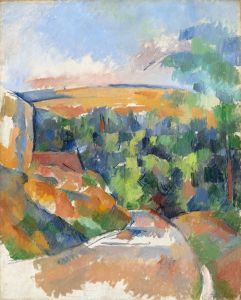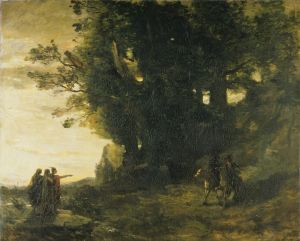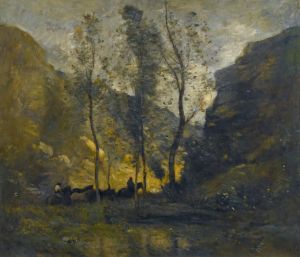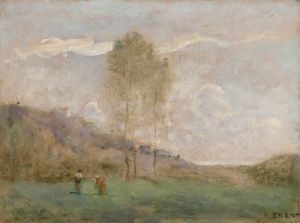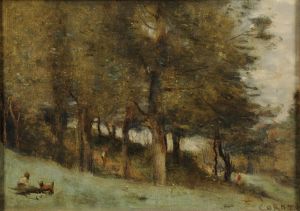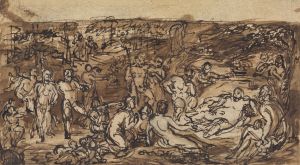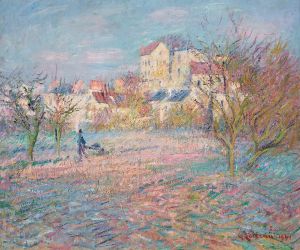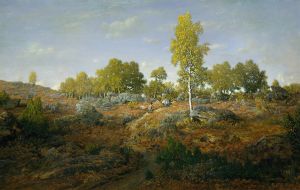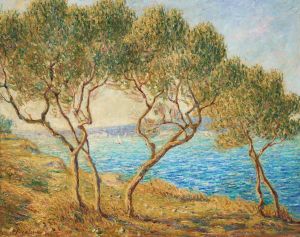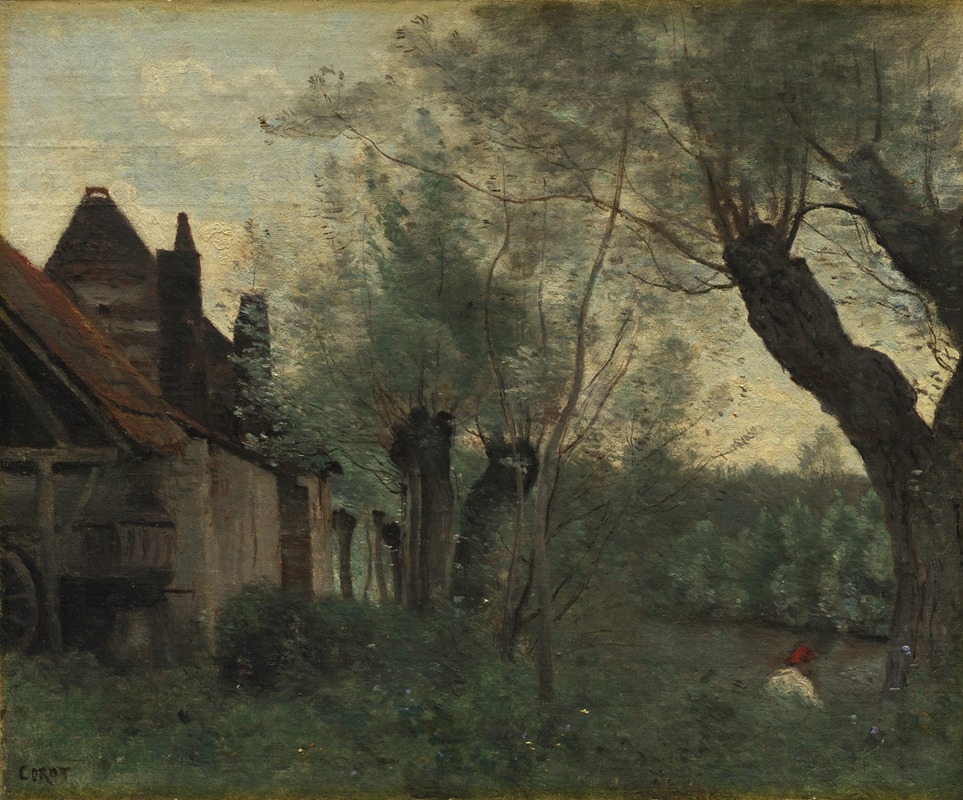
Willows and Farmhouse at Sainte-Catherine-lès-Arras
A hand-painted replica of Jean-Baptiste-Camille Corot’s masterpiece Willows and Farmhouse at Sainte-Catherine-lès-Arras, meticulously crafted by professional artists to capture the true essence of the original. Each piece is created with museum-quality canvas and rare mineral pigments, carefully painted by experienced artists with delicate brushstrokes and rich, layered colors to perfectly recreate the texture of the original artwork. Unlike machine-printed reproductions, this hand-painted version brings the painting to life, infused with the artist’s emotions and skill in every stroke. Whether for personal collection or home decoration, it instantly elevates the artistic atmosphere of any space.
Jean-Baptiste-Camille Corot's Willows and Farmhouse at Sainte-Catherine-lès-Arras is a landscape painting created by the French artist during the 19th century. Corot, a pivotal figure in the transition between Neoclassicism and Impressionism, is renowned for his poetic depictions of nature and his ability to capture light and atmosphere. This particular work exemplifies his mastery of landscape painting and his dedication to portraying the natural world with sensitivity and precision.
The painting depicts a serene rural scene, featuring a cluster of willows and a farmhouse situated in Sainte-Catherine-lès-Arras, a commune in northern France. Corot's use of soft, muted tones and delicate brushwork conveys a sense of tranquility and harmony between the natural and human-made elements of the landscape. The willows, with their gently drooping branches, frame the composition and draw the viewer's eye toward the farmhouse in the background. The scene is imbued with a quiet, almost meditative quality, characteristic of Corot's later works.
Corot often traveled throughout France, sketching and painting en plein air to capture the essence of specific locations. Sainte-Catherine-lès-Arras, located near the city of Arras in the Pas-de-Calais region, provided the artist with an idyllic setting for his exploration of light, texture, and atmosphere. While the exact date of the painting's creation is not definitively documented, it is consistent with Corot's mature style, which emphasizes a balance between realism and lyrical interpretation.
As with many of Corot's works, Willows and Farmhouse at Sainte-Catherine-lès-Arras reflects his influence on the Barbizon School and the later Impressionist movement. His ability to depict the subtleties of light and shadow, as well as his focus on the emotional resonance of the landscape, inspired a generation of artists who sought to break away from the rigid conventions of academic painting.
The painting is currently housed in the Louvre Museum in Paris, France, where it is part of the museum's extensive collection of 19th-century European art. It remains a testament to Corot's enduring legacy as one of the most important landscape painters of his time. Through works like this, Corot bridged the gap between traditional and modern approaches to art, leaving an indelible mark on the history of painting.





